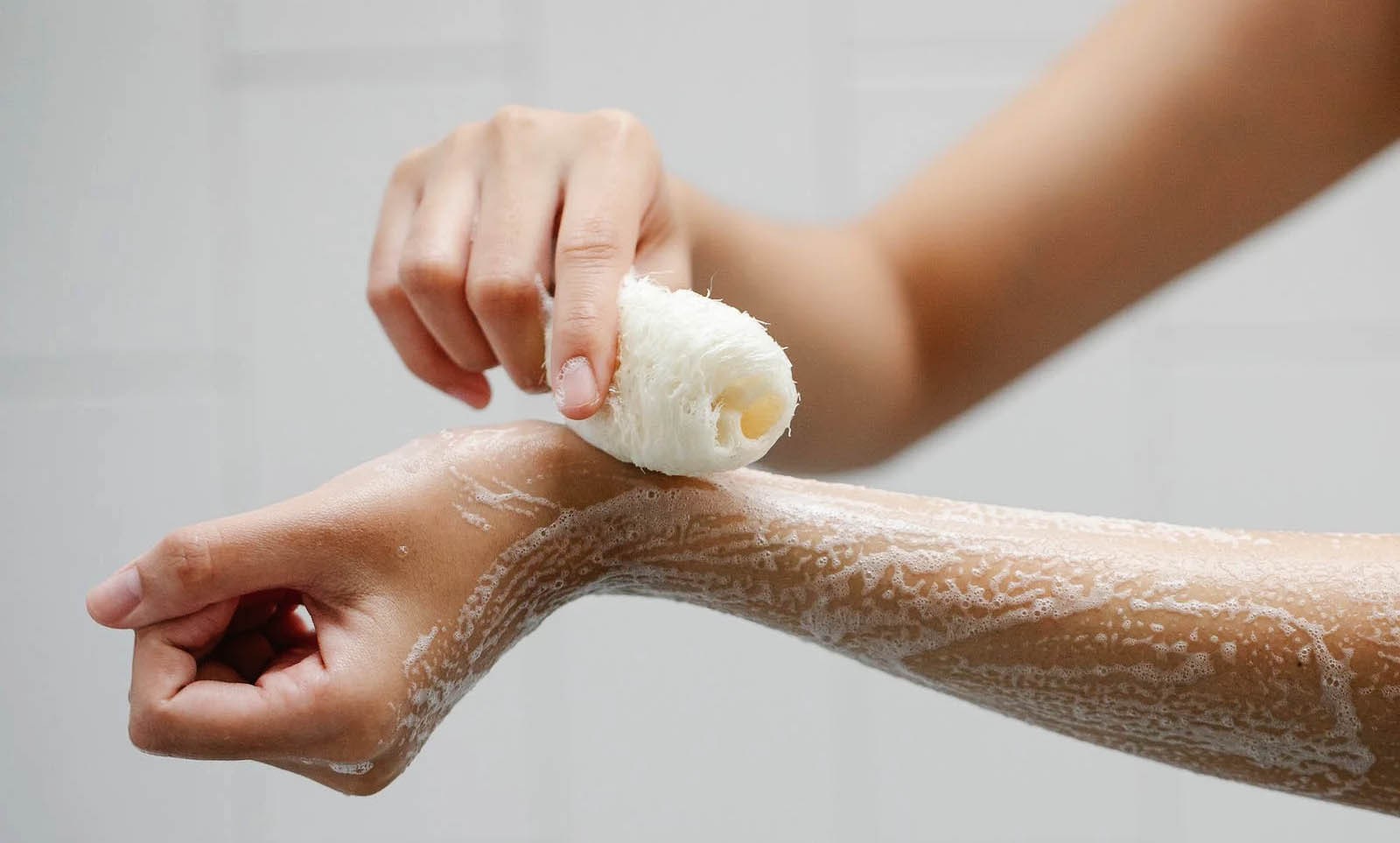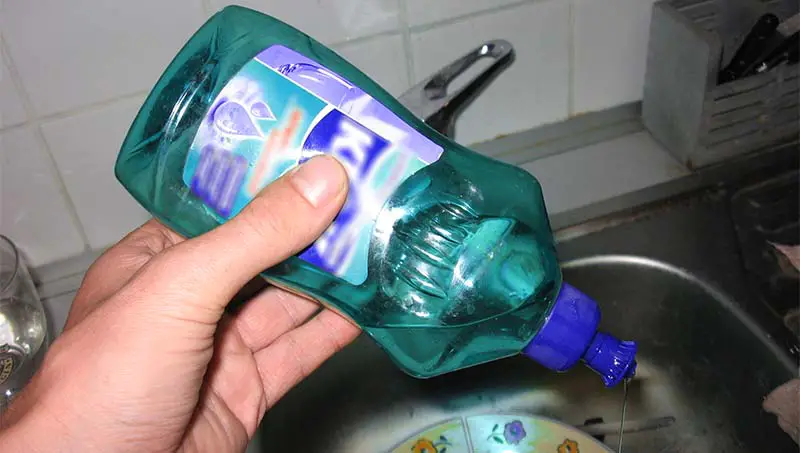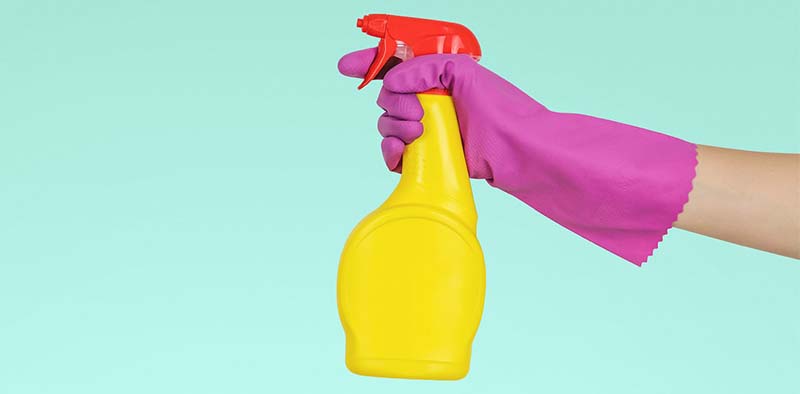Dish soap is one of the most important household cleaning products, and for a good reason, it’s helpful for cleaning dirty dishes and surfaces. However, a common ingredient in dish soap is methylisothiazolinone (MIT). This is a preservative which poses some health risks, including allergies and skin irritation. Moreover, methylisothiazolinone is harmful to the environment.
So, how do you use dish soap without methylisothiazolinone? A variety of dish soap products on the market don’t contain MIT, so it’s worth checking the ingredients before you buy.
In this article, we will have a deep dive into the safest ways to use dish soap without MIT and the best alternatives.
What Is Methylisothiazolinone And Why Is It Used In Dish Soap?
Methylisothiazolinone is a synthetic chemical compound used as a preservative in some personal care products and dish soap. It helps to prevent bacterial contamination due to its antimicrobial properties.
Methylisothiazolinone can cause allergies, skin irritation, and environmental damage. Therefore, it is best not to use dish soap in the dishwasher containing methylisothiazolinone if you are allergic to it or have sensitive skin.
Why Use Dish Soap Without Methylisothiazolinone?
The answer is simple – it’s a safer option. One of the most common ingredients in dish soap is methylisothiazolinone. However, this ingredient can cause numerous health concerns, such as skin irritation, allergies, and even cancer.
In fact, the American Contact Dermatitis Society named this preservative “Contact Allergen of the Year” in 2013. Hence, using it without methylisothiazolinone will help protect your health and the environment.
Here are some common reasons to ditch methylisothiazolinone in your dish soap:
Methylisothiazolinone is a synthetic pesticide
Methylisothiazolinone is a synthetic pesticide that you may find in many dish soaps. It can be risky to your health if you accidentally ingest it. MIT is also harmful to the environment because it can negatively affect the marine life with which it comes in contact.
It can contaminate food
If you accidentally ingest methylisothiazolinone, it can cause food poisoning. This is possible if you get it on your hands while doing laundry and then touch your mouth or food. This can be particularly harmful to children and pregnant women.
Safe Alternatives To Methylisothiazolinone
Methylisothiazolinone (MIT), an ingredient that you can find in a number of dish soaps and body washes, can cause skin irritation and allergic reactions.
There are some alternative dish soaps that don’t contain MIT. These are:
Citric acid-based dish soap
Citric acid is an organic acid commonly you will find in citrus fruits such as lemons and oranges. It’s often used as a preservative in food products because it inhibits the growth of mold, yeast, and bacteria.
Potassium sorbate-based dish soap
Potassium sorbate is another natural preservative commonly used in food production. This is because it prevents mold growth without affecting taste or texture.
Different Types Of Dish Soap Without Methylisothiazolinone
Methylisothiazolinone is a preservative you will see in many dish soaps. It’s often cited as a cause of allergies and other health concerns. Fortunately, there are plenty of safe alternatives to methylisothiazolinone on the market. Some of the safest options include homemade dish soap, castile soap, and olive oil soap.
All of these soaps are gentle enough to use on dishes but powerful enough to clean everything in your kitchen! Plus, they are also safe for the environment and your health.
So, whether you’re looking for a safer way to use dish soap or just want to switch to a safer dish soap altogether, these three options should do the trick!
Homemade Dish Soap
Homemade dish soap is a great way to save money and get rid of harmful chemicals. Not only that, but it’s also safe to use on all surfaces – making it the perfect choice for cleaning all your kitchen appliances and dishes!
To make homemade dish soap, you’ll need the following:
- 1 tablespoon essential oil
- Half cup white vinegar
- Half cup Sal suds
- Half a cup of warm distilled water
Here are the steps to make homemade dish soap:
- First, combine the distilled water and white vinegar in a medium-sized bowl.
- Now, add Sal Suds to the water and vinegar mixture, and stir.
- Finally, Add the essential oil to the mixture and gently stir to combine. Your homemade dish soap is ready!
Castile Soap
Castile soap is a gentle, all-natural cleanser that does the job without harsh chemicals. It is perfect for sensitive skin, and its antibacterial properties make it ideal for cleaning cookware, countertops, and other areas. You can find castile soap at most grocery stores and pharmacies.
Olive Oil Soap
Olive oil soap is a great option for people with sensitive skin because it does not contain methylisothiazolinone. It is also good for removing food residues and leaves your dishes feeling clean and fresh.
How To Avoid Using Dish Soap With Methylisothiazolinone?
Dish soap can be a great way to clean dishes, but it’s important to be aware of the potential dangers of methylisothiazolinone.
To avoid methylisothiazolinone exposure, it’s important to read the ingredients list of any dish soap before using it.
Alternatives like washing dishes with water and vinegar can also help reduce exposure to this chemical. If you end up using dish soap with methylisothiazolinone, make sure to take proper safety precautions.
So how can you avoid using dish soap with MIT? Here are a few tips:
1. Check the label: Make sure to check the ingredients list before you buy dish soap. If MI is listed, put it back on the shelf and find another brand.
2. Look for alternatives: There are plenty of dish soaps on the market that doesn’t contain MI. Although dish soaps containing Sodium Laureth Sulfate (SLS) and sodium lauryl sulfate can irritate the skin sometimes, they are not carcinogenic like methylisothiazolinone. You can find them at most grocery stores and pharmacies.
3. Make your own: You can make your own homemade liquid dish soap without MIT by using a natural soap base, essential oils, and other preservatives.
4. Use water: Instead of using methylisothiazolinone-containing dish soap, try washing dishes and other household products with water and a little bit of vinegar to get the same cleaning results. Vinegar is also an effective cleaner, so you can use it as a substitute for dish soap in many cases.
No matter what method you choose, avoiding dish soap with MI is the easiest way to protect your health. So take a closer look at your dish soap and make the switch to a healthier option as soon as possible.
Is Methylisothiazolinone Safe To Use In Dish Soap?
Methylisothiazolinone is NOT safe to use in dish soap. It’s been linked to skin irritation, contact dermatitis, and allergic reactions. In addition, it can be dangerous if you swallow it, and if it gets into the eyes, it can cause eye damage.
It will be very dangerous if it enters the water supply, and experts advise avoiding its use. If you are looking for safe and effective dish soap, look for one that is free of MIT and other harmful chemicals like dyes, fragrances, formaldehyde, isothiazolinone, methylchloroisothiazolinone, benzisothiazolinone, and phthalates.
There are plenty of safe and non-toxic dish soap options available, so give them a try to lead a better life.
Is Methylisothiazolinone Safe For The Environment?
No, methylisothiazolinone is not safe for the environment. Many people are concerned about the safety of methylisothiazolinone (MIT), a chemical used in many dish soaps. Some studies have even linked MIT to health problems, including cancer.
Many experts believe that using a safer alternative is the best option for the environment and your safety. Luckily, there are several safe alternative cleaners available on the market, such as eco-friendly soap bars or natural dish detergents without MIT.
So, whether you’re looking to reduce your environmental impact or just want to be extra safe, opting for a safer dish soap is the right choice!
FAQ
Is It Safe To Use Dish Soap Without Methylisothiazolinone?
Yes, it is safe to use dish soap without methylisothiazolinone. This is a chemical used in many dish soaps, but some studies have linked it to health problems, including irritation, allergies, and cancer. Several safe alternatives available on the market that don’t include methylisothiazolinone.
Is It Okay To Use A Dishwashing Liquid With Chlorine?
No, chlorine is a highly poisonous product and should only be used in very small amounts. It can be harmful to aquatic life if it enters the water supply, so it’s important to avoid using chlorine-free dishwashing products when possible.
Can I Avoid Getting Methylisothiazolinone (Mi) In My Food Or Water?
Yes, you can avoid methylisothiazolinone (MIT) in your food and water by using a dish soap that does not contain it. Make sure to read the ingredients carefully, as some dish soaps may also include other harmful chemicals like triclosan.
Does Dawn Dish Soap Contain Methylisothiazolinone?
Yes, Dawn dish soap contains methylisothiazolinone (MIT), a harmful chemical that can be toxic if ingested.
Does Palmolive Dish Soap Have Methylisothiazolinone?
Palmolive dish soap does not contain methylisothiazolinone, which is a common ingredient found in most brands.
Conclusion
Soaps containing methylisothiazolinone are harmful to your health and the environment. Not only is methylisothiazolinone a known skin irritant, but it can also cause environmental damage. So you should try to use soap without methylisothiazolinone. To do that, you should go for dish soaps that do not contain this harmful ingredient. Additionally, be sure to read the ingredient list of the dish soap to confirm that it does not contain methylisothiazolinone.
You can learn more can you How To Clean Your Toilet Tank With Dawn Dish Soap?






